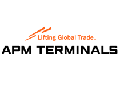OPEC+ gathers in Vienna, with speculators on notice, oil demand in focus

Two weeks of market speculation in the wake of threats by Saudi Arabia’s energy minister to leave short-sellers “ouching” will come to a head June 3-4 in Vienna, as OPEC and its allies prepare to hold their first in-person meeting since October to deliberate on oil-production quotas.
While Prince Abdulaziz bin Salman’s comments, made at an industry conference in Qatar May 23, left open the interpretation that deeper output cuts could be coming, several delegates have told S&P Global Commodity Insights that a decision has not been made, and the OPEC+ alliance could very well stand pat on production volumes.
Production increases appear to be ruled out, despite many forecasts of rising oil demand in the months ahead, largely from China.
“We have [an] appetite for less volatility and more stability in the market, not for more cuts of our production and revenue,” one delegate said on condition of anonymity when asked if there was a consensus among the group for tighter quotas.
The meeting comes as crude prices have continued to flag despite several members of the OPEC+ alliance unexpectedly announcing additional voluntary production cuts in April—on top of reductions already in force since November—to bolster market sentiment.
Global economic worries, fanned by still-high inflation in many countries and recent tepid economic data out of China, have put a damper on crude prices, with Platts—part of S&P Global—assessing Dated Brent at $72.89/b May 31, down from a four-month high of $88.21/b April 12.
Another cut could be attempted to backstop the slump but also runs the danger of further inflaming bearish sentiment if OPEC+ ministers are seen to lack confidence in growth forecasts.
“OPEC+ has some more room to cut, but at this early juncture of the implementation of the April voluntary cuts, it may prove unable to deliver the necessary shock to send markets sustainably higher, and back-to-back cuts may signal a more worrisome demand picture,” S&P Global analysts wrote in a May 30 note.
Market confusion
Prince Abdulaziz, the half-brother of Saudi crown prince and de facto leader Mohammed bin Salman, has been known to spring surprises on the market.
Speaking to the Qatar Economic Forum, he warned speculators and short-sellers to “watch out” and warned that they “will ouch like they did in April” when the voluntary cuts were announced.
The OPEC+ meeting will be held a day ahead of when state-run oil company Saudi Aramco typically announces its official selling prices for crude loadings in the month ahead—read by the market as a barometer of how the world’s largest crude exporter sees near-term oil demand.
And it comes as Saudi Arabia faces significant financial pressures to use its oil wealth to fund a number of megaprojects the crown prince championed. S&P Global estimates Saudi Arabia’s fiscal breakeven oil price at $80.90/b.
But Prince Abdulaziz’s comments were somewhat undermined the next day by Russian Deputy Prime Minister Alexander Novak, who said in a televised interview that he did not expect any changes to OPEC+ policy at the meeting, “because just a month ago decisions were taken for some countries to make voluntary oil production cuts, due to the fact that we saw the slow pace of global economic recovery.”
The Russian energy ministry would later say Novak’s remarks had been taken out of context and that ministers would gauge market conditions at the meeting and then decide on production levels.
Russia, under major fiscal strain owing to its war in Ukraine, has seen its breakeven oil price skyrocket to $114.42/b, according to S&P Global estimates.
The dueling comments sowed much confusion in the market and hinted at some cracks between Saudi Arabia and Russia, the two co-chairpersons of the OPEC+ alliance.
Also unsettling the market has been Russia’s record crude exports in the face of Western sanctions and the G7’s price cap, as well as Moscow’s self-declared intent to cut 500,000 b/d of production from February levels.
Exports of Russia’s flagship Urals crude increased to 2.3 million b/d in May from 2.2 million b/d in March and April, S&P Global Commodities at Sea data shows.
Russian officials have downplayed any suggestions of a split in OPEC+ unity and have said privately that exports have been boosted by draws from storage and that the cut has, in fact, been implemented.
The latest Platts OPEC+ survey by S&P Global estimated Russian crude output at 9.60 million b/d in April, down just 260,000 b/d from February.
Closely watched
Since the pandemic, the group’s ministers have chosen to hold almost all of their meetings virtually, even after lockdown restrictions in the OPEC secretariat’s host nation of Austria have been lifted.
October’s meeting, in which the alliance announced 2 million b/d in cuts, was the first in-person gathering since 2020. A December meeting that was also supposed to be held in Vienna was switched to online at the last minute.
With oil prices stuck in a rut amid great uncertainty in the global economy, this coming meeting is highly anticipated, even by usual OPEC+ standards, with officials welcoming their first opportunity in six months for face-to-face oil diplomacy.
“These ministers are so happy that they are going to be in the same place on the same day at the same time,” a delegate said. “It’s not the same thing on [a] video call.”
The buzz around the meeting has been amplified by a media storm that has erupted after several reporters that typically cover the organization were not invited to attend the proceedings at the secretariat. Journalists from S&P Global did receive an invitation.
The weekend’s events will begin with OPEC’s 13 members convening June 3, largely to discuss administrative matters. A nine-country ministerial monitoring committee, co-chaired by Prince Abdulaziz and Novak, will then meet on the morning of June 4, to be followed by the full OPEC+ meeting, when a decision on quotas is expected to be announced.
Source: Platts

 Hellenic Shipping News Worldwide Hellenic Shipping News Worldwide, Online Daily Newspaper on Hellenic and International Shipping
Hellenic Shipping News Worldwide Hellenic Shipping News Worldwide, Online Daily Newspaper on Hellenic and International Shipping





















 PG-Software
PG-Software